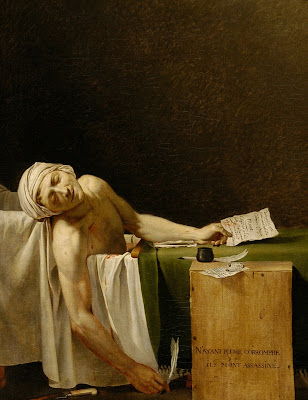Neo-Concrete Art
In 1959, the Neo-Concrete Art movement blossomed in Brazil after the Concrete Art movement migrated to Brazil from Europe in the 1950's (Taheza). Neo-Concrete artists took inspiration from Concrete art which conveyed scientific principles through abstraction. Rather than expressing scientific principles, Neo-Concrete artists aimed to express a more poetic feeling through abstraction. Many art works from this movement have either multiple or loose meanings leaving more room for different interpretations from the viewers. I appreciate the freedom and flexibility of Neo-Concrete art especially compared to Concrete art.



Spatial Relief (red) REL 036, Hélio Oiticica, 1959
The piece above was made from polyvinyl acetate resin on plywood and is displayed suspended from the ceiling. The artist's intentions were to force the viewer to walk around and explore the piece in order to see its various shapes and colors. According to Tate, "It is painted in two very similar colours, chosen for their reaction to light." I was surprised to learn that the piece is only two colors because depending on the viewer's perspective, the colors seem to range from dark red, red, orange, red orange, and even yellow orange. My favorite thing about the piece is the hidden shapes that are exposed by seeing it at different angles. The artwork displays obvious themes of change and movement but I believe it could reflect a deeper meaning of change relating to the human experience.
Bichos (Installation view), Lygia Clark, 1965
Above is an installation of Lygia Clarks Bichos, or critters, which are metal sculptures pieced together with hinges. The sculptures challenge the idea that there is only one way to view or experience them (Dr. Maya Jiménez). People are encouraged to bend the hinges of the sculptures and explore their various shapes and forms. Dr. Maya Jiménez states "The work of art is not the viewing of the sculpture itself, but one's participation with it." I found these sculptures interesting because typically sculptures structures are hidden or covered whereas in this case the structure is open for everyone to see and even play with. I appreciate the simplicity of them being plain metal but I think if the sides were all painted different colors it would add to the experience when moving the pieces in different positions.
Large Split Relief No. 34/4/74, Sergio de Camargo, 1964-5
Camargo created multiple of these monochrome white artworks of painted pieces of wood including Large Split Relief No. 34/4/74. The wood is displayed in a way that creates multiple highlights and shadows across its surface. Shadows are created on the wall behind the piece as well showing its texture and depth. Camargo explained, "This phase, on which I am still working, is a response to a need to dematerialize the work. This means the culmination of the transition from representational figuration to a real space capable of having significance itself and of having the power to move the emotions because it has been freed from every other intentional suggestion. Light obviously plays an essential formal part in giving the work its visual existence and even its own spatial dimensions. The splits in the elements which I use have the purpose of accentuating the rhythms which arise out of the placing of the elements."
Sources
Taheza. “Introduction to Non-Western Art Movements.” Taheza, 14 June 2021, https://taheza.com/non-western-art-movements/.
Tate. “'Spatial Relief (Red) REL 036', Hélio Oiticica, 1959.” Tate, https://www.tate.org.uk/art/artworks/oiticica-spatial-relief-red-rel-036-t12763.
Jiménez, Dr. Maya. “Lygia Clark, Bicho.” Khan Academy, https://www.khanacademy.org/humanities/art-1010/latin-america-modernism/constructivism/a/lygia-clark-bicho.
Tate. “'Large Split Relief No.34/4/74', Sergio De Camargo, 1964–5.” Tate, https://www.tate.org.uk/art/artworks/camargo-large-split-relief-no-34-4-74-t00797.







Comments
Post a Comment